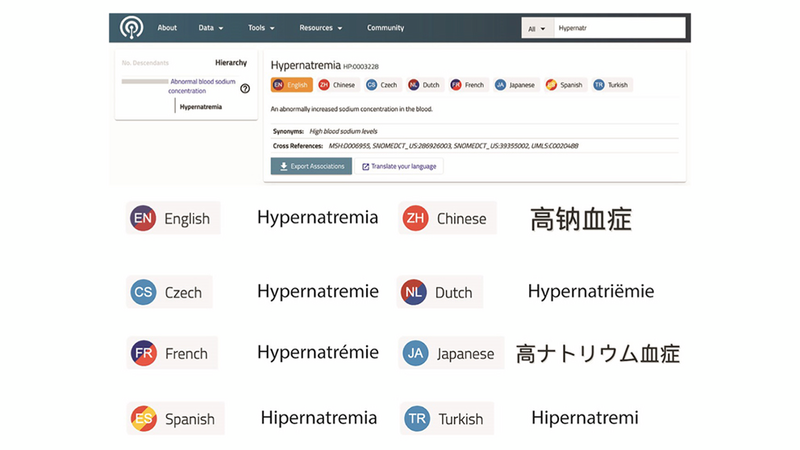The HPO goes global
Research Highlight | November 14, 2023
Phenotypes are produced by the interaction of the organism’s genetic composition and its environment. For people, clinical phenotypes are ones that capture how a disease affects a person’s characteristics and function.
These days, clinical phenotypes are usually captured in medical settings, such as at one’s primary physician’s office, and stored in electronic health records (EHRs). Unfortunately, EHRs were set up to help with billing, not to assemble clinical phenotype data in a standardized, shareable and computable format. To address the problem, researchers led by The Jackson Laboratory ProfessorPeter Robinson, M.D., developed the Human Phenotype Ontology (HPO) to better represent the diversity of human phenotypes. The HPO is widely used and has widespread applications in clinical diagnostics, translational research and patient cohort analyses. And it’s now a global resource.
In “The Human Phenotype Ontology in 2024: phenotypes around the world,”published in Nucleic Acids Research, Robinson and a large number of collaborators present the HPO Internationalization Effort (HPOIE), a loose alliance of translation communities seeking to break down language barriers for the purpose of international HPO curation. There are currently 10 official languages in addition to English, including Czech, Chinese, French, Japanese and Spanish, and these were updated in 2023. All HPO translations are available on the HPO GitHub repository.
HPO updates
The HPO in English has continued active development since its initial publication 15 years ago. In addition to the translations, the paper documents recent HPO updates since the most recent (October 2020) release. In all, 2,239 terms, 612 definitions and 1,377 synonyms have been added or updated, and 671 classes renamed. While the English HPO uses American spelling conventions, British spellings are provided as synonyms.
There has also been an ongoing effort to improve the HPO’s coverage of specific clinical areas, based on workshops with clinical experts and discussions among domain experts and the HPO team. Newly enhanced clinical areas include behavior, prenatal medicine, autoantibodies, cerebral palsy, pulmonology, COVID-19 and long COVID-19, and more. Other efforts related to HPO implementation include interoperability with other ontologies, integration with clinical diagnostic software, and EHR data interoperability.

